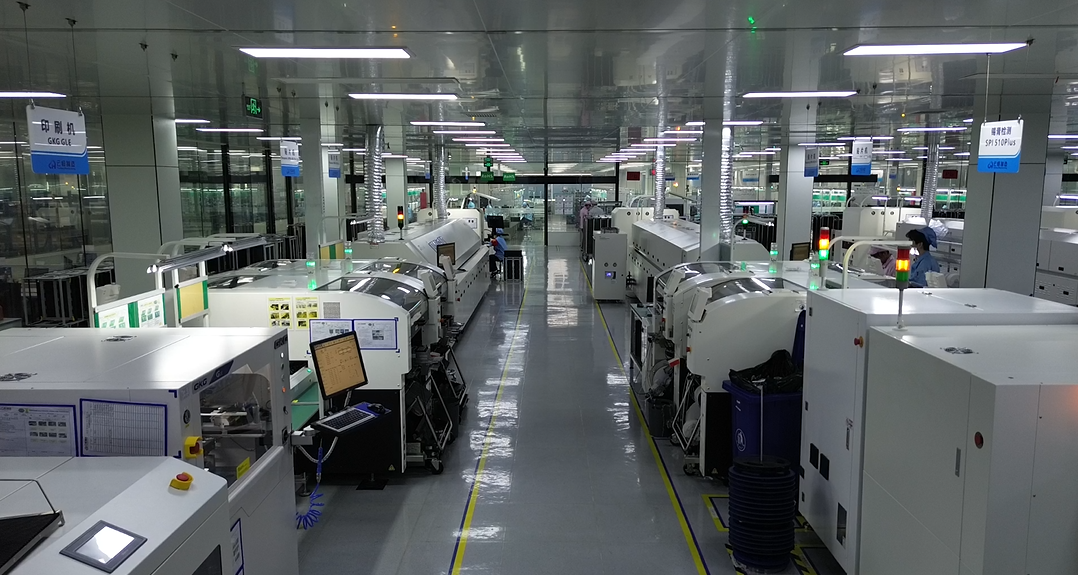TheBasicsofSMTAssembly:HowTinyPartsPowerModernElectronics
What Is Surface Mount Technology (SMT)?
Surface Mount Technology (SMT) is a method for assembling electronic circuits by mounting components directly onto the surface of printed circuit boards (PCBs). Unlike older through-hole techniques, SMT components lack long leads and instead use small metallic tabs or solder balls for connection. This approach allows for smaller, lighter, and more densely packed designs. Most modern electronics, from smartphones to medical devices, rely on SMT because of its efficiency and compatibility with automated manufacturing processes.
Key Equipment in SMT Production Lines
SMT assembly lines depend on specialized machinery to achieve precision and speed. A solder paste printer applies a thin layer of solder paste to PCB pads using a stencil. Next, pick-and-place machines position components onto the board with accuracy measured in micrometers. Reflow ovens then melt the solder paste to create permanent connections. Inspection systems, such as automated optical inspection (AOI) and X-ray machines, check for defects like misalignment or insufficient solder. Each piece of equipment plays a critical role in maintaining quality and throughput.
The Role of Solder Paste in SMT
Solder paste, a mixture of tiny solder particles and flux, acts as both an adhesive and a conductive material during assembly. Its viscosity must be carefully controlled to ensure proper application through stencils. The flux component cleans metal surfaces and prevents oxidation during heating. Variations in solder paste composition, such as lead-free formulas, address environmental regulations and performance requirements. Improper handling or storage can lead to issues like dry joints or bridging, making paste management a vital part of the process.
Component Packaging and Handling
SMT components come in standardized packages to fit automated systems. Common formats include resistors and capacitors in tape reels, integrated circuits in trays, and ball grid array (BGA) chips in protective carriers. Moisture-sensitive components often require dry storage to prevent damage during soldering. Miniaturized parts, such as 01005 resistors measuring 0.4mm x 0.2mm, demand precise handling to avoid placement errors. Proper feeder setup and machine calibration are essential to minimize waste and downtime.

Quality Control Challenges
Defects in SMT assembly can arise from multiple sources. Tombstoning occurs when a component stands vertically due to uneven solder melting. Solder bridges form when excess paste connects adjacent pads, causing short circuits. Voiding, or trapped air pockets in solder joints, may weaken connections over time. Inspection tools like AOI systems use cameras and algorithms to detect these issues, while X-rays reveal hidden problems in BGAs or under components. Regular maintenance of stencils and reflow oven temperature profiles helps reduce error rates.
Environmental and Safety Considerations
SMT manufacturing involves chemicals and high-temperature processes that require safety measures. Lead-free soldering, mandated by regulations like RoHS, reduces toxic waste but requires higher melting points. Flux fumes from reflow ovens need extraction systems to protect workers. Waste solder paste and used stencils must be disposed of according to local environmental guidelines. Energy-efficient equipment and recycling programs help factories lower their environmental impact while cutting operational costs.
Applications Across Industries
From consumer gadgets to aerospace systems, SMT enables compact and reliable electronics. In automotive manufacturing, SMT-produced engine control units withstand vibrations and temperature extremes. Medical devices like pacemakers use ultra-miniaturized SMT components for implantable designs. Industrial automation systems benefit from the high-density circuitry made possible by SMT. Even everyday items like LED lighting and Wi-Fi routers rely on the technology for affordable, high-performance electronics.
Cost Factors in SMT Projects
While SMT reduces labor costs through automation, initial investments in equipment and training can be substantial. High-mix, low-volume production runs face challenges in setup time and material waste. Design choices, such as component size and PCB layer count, directly influence manufacturing expenses. Outsourcing to assembly houses becomes cost-effective for companies lacking in-house SMT capabilities. Balancing quality standards with budget constraints requires careful planning at every stage.
Common Myths and Misconceptions
Some believe SMT is only suitable for mass production, but advancements in flexible manufacturing systems now support small batches. Others assume manual rework is impossible for tiny components, though specialized tools and microscopes enable precise repairs. A persistent myth claims lead-free solder is less reliable than traditional formulas, but modern alloys meet stringent industry requirements. Understanding these realities helps businesses make informed decisions about adopting or optimizing SMT processes.
Skills Required for SMT Operators
Operating SMT machinery demands technical knowledge and attention to detail. Engineers must interpret Gerber files and bill of materials (BOM) to configure equipment settings. Troubleshooting skills are crucial for diagnosing issues like solder splatter or component misalignment. Familiarity with IPC standards ensures consistent product quality. As components shrink and processes evolve, ongoing training in new technologies like 3D solder paste inspection becomes essential for maintaining competitiveness.
The Impact of Miniaturization
Shrinking component sizes push the limits of SMT capabilities. Ultra-fine-pitch components with 0.3mm spacing require advanced placement machines and inspection tools. Flexible PCBs and stretchable electronics introduce new challenges in material handling. Innovations like chip-scale packaging (CSP) and system-in-package (SiP) designs continue to drive miniaturization trends. These advancements enable wearable devices and IoT sensors that would be impossible with older assembly methods.
Material Innovations in SMT
New materials address the demands of high-frequency and high-power applications. Low-loss dielectric substrates improve signal integrity in 5G devices. Conductive adhesives offer alternatives to traditional soldering for heat-sensitive components. Solder alloys with higher thermal conductivity enhance reliability in automotive electronics. These developments not only solve technical challenges but also open doors to novel product designs across multiple sectors.
(Word count: 2,679)